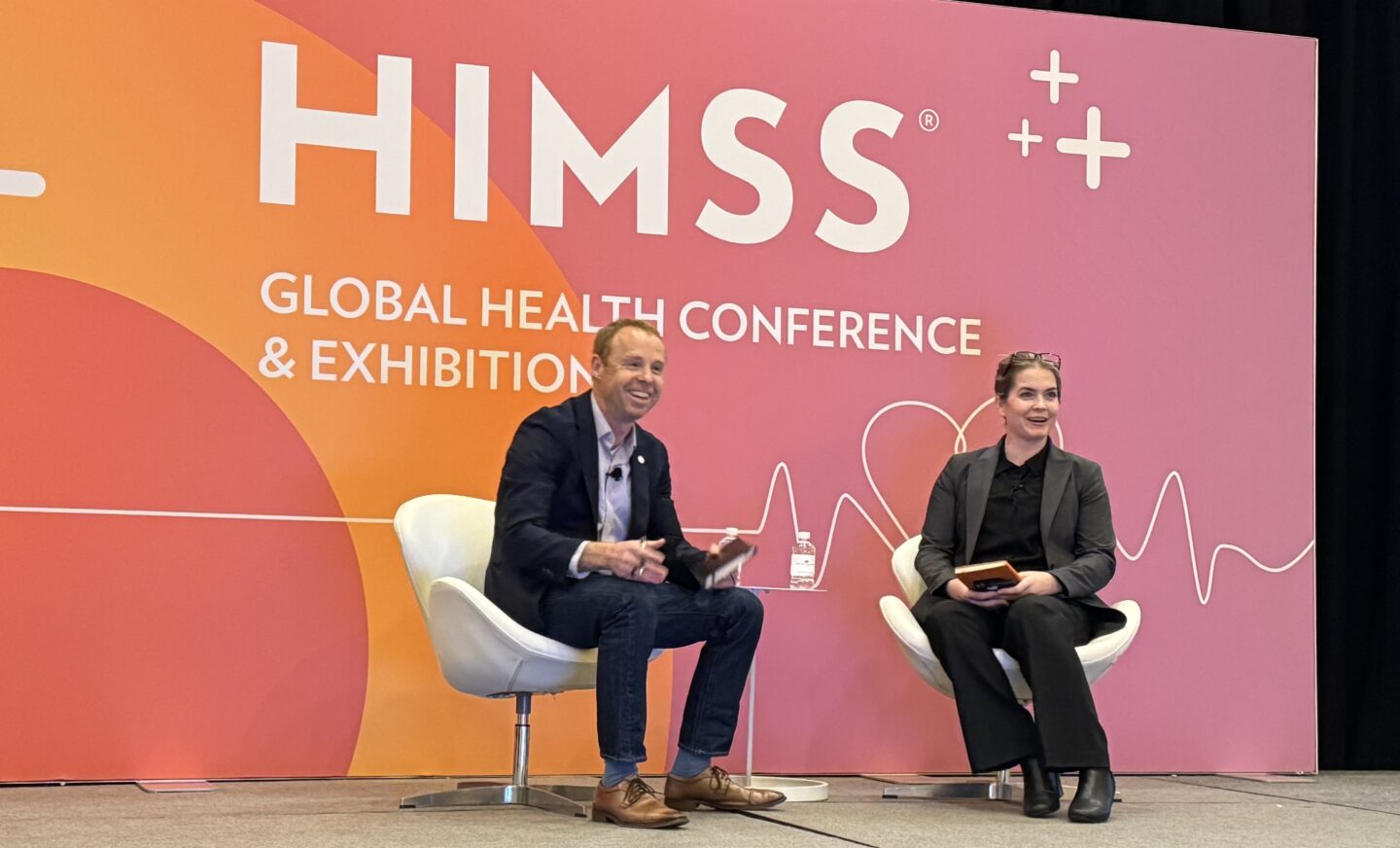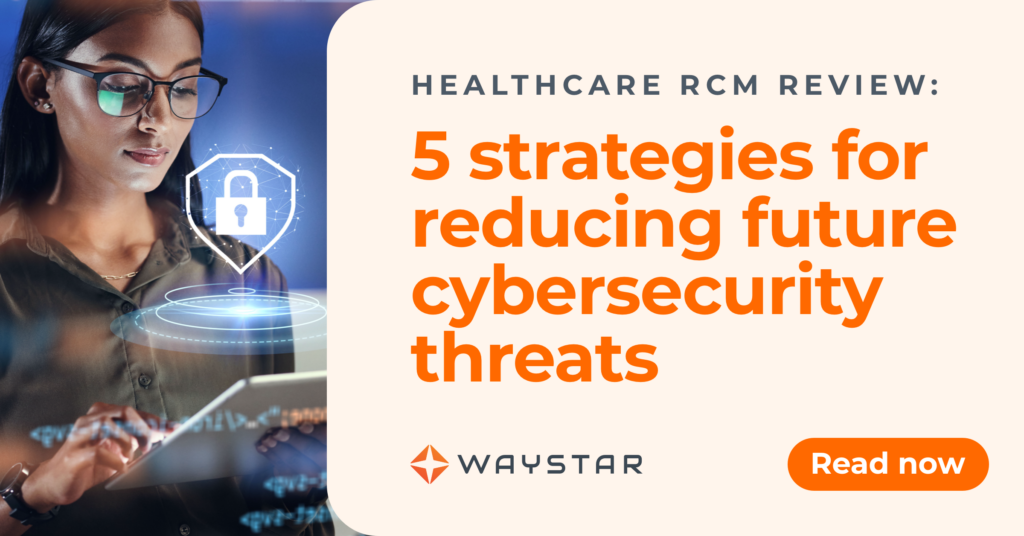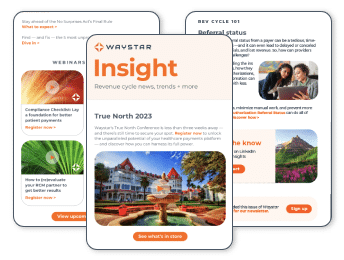The healthcare industry is undergoing an AI-driven transformation, and revenue cycle management (RCM) leads the charge in many ways. As teams strive to reduce denials, increase cash flow, and streamline processes, implementing AI in healthcare RCM is essential.
In fact, organizations are already leveraging AI to:
- Eliminate 80% of manual work
- Increase point-of-service payments by 30%, and
- Rebill $5.9 million in missing charges.
What’s more, research finds that 92% of healthcare leaders say investing in AI, GenAI, and advanced automation for RCM is a top priority.
At Healthcare Information and Management Systems Society (HIMSS) 2025, Chris Schremser, Waystar CTO, spoke about this in-depth with Tiffany Trammel, IT Director of Revenue Cycle Systems at Cleveland Clinic. Their discussion shed light on how healthcare organizations can succeed in implementing AI in healthcare RCM while:
- Enhancing the patient experience
- Accelerating research, and
- Reaching operational efficiency.
Implementing AI in healthcare RCM
1. How to lay a foundation for success in AI
Structure + attention
To establish AI as a focus area, the healthcare organization introduced a Chief AI Officer in 2024. This was critical because it allows them to separate innovative AI initiatives from day-to-day IT operations, ensuring that both areas receive attention.
They also established a cross-functional AI committee to evaluate projects. With representatives from finance, research, IT, patient care, and strategy, the committee can:
- Streamline decision-making
- Mitigate potential conflicts among use cases
- Ensure all initiatives are strategically aligned
A key tool in this effort is their “build, buy, or partner” evaluation framework, which helps them decide which AI solutions should be developed (internal) or sourced (external) to maximize efficiency and effectiveness.
Education
The organization is also committing to AI education going forward by:
- Prioritizing foundational AI knowledge for all employees
- Focusing on deep AI knowledge for those in IT
- Developing educational roadmaps to keep staff informed long-term
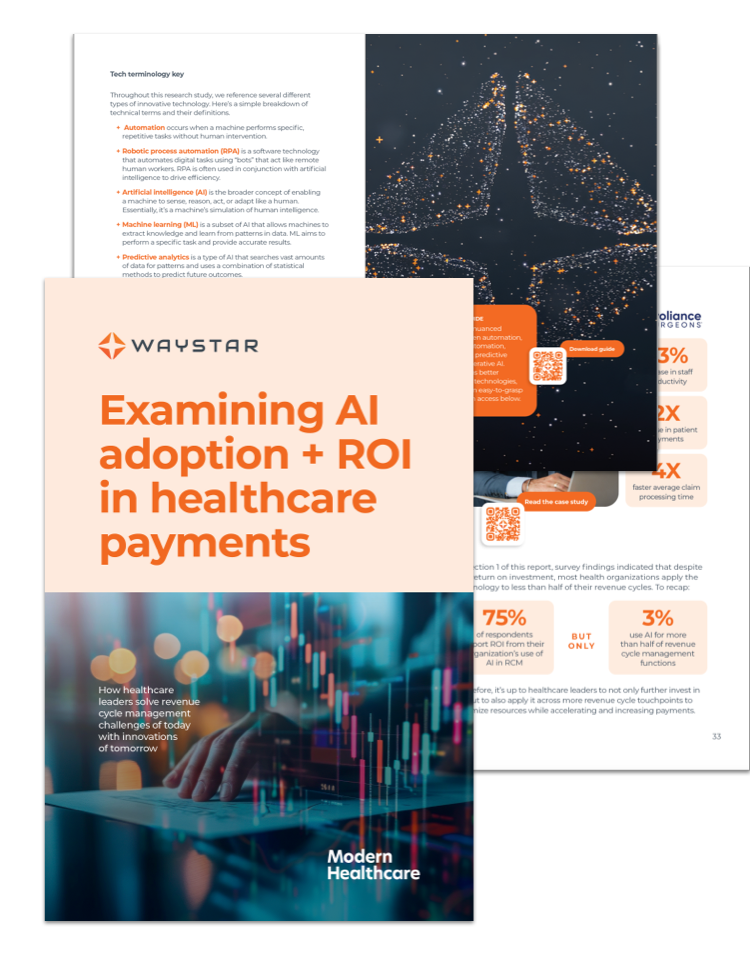
Implementing AI in healthcare RCM
2. How to evaluate vendors for AI-powered RCM solutions
Vendor selection is a critical component of AI adoption, and successful teams often prioritize transparency. By choosing vendors that offer clear insight into their AI capabilities but are also willing to reveal their limitations, everyone stays on the same page. That’s become crucial recently with the rise of vaporware: software that is advertised as cutting-edge but isn’t ready or simply can’t deliver.
To avoid this, organizations should vet vendors to ensure all AI-driven solutions are:
- Functional: The technology is up and running, with performance metrics that show success
- Future-proof: There’s a maintenance and/or growth plan, ensuring the solution will evolve and improve
- Capable of integration: The technology can (or will) be used across the revenue cycle, not just at specific points
The third requirement — integration — is key. Rather than using isolated point solutions, organizations choose AI technology that can operate across workflows, which makes it possible to scale quickly.
The pivot away from point solutions mirrors a larger trend in revenue cycle management: the move to end-to-end software. Studies show that 71% of healthcare leaders have 1-2 software partners managing their whole revenue cycle today. Just two years ago, roughly the same number (73%) were using 4+ vendors for RCM tasks. As the industry trends toward streamlined operations and selecting fewer partners more strategically, AI-powered solutions will be no exception.
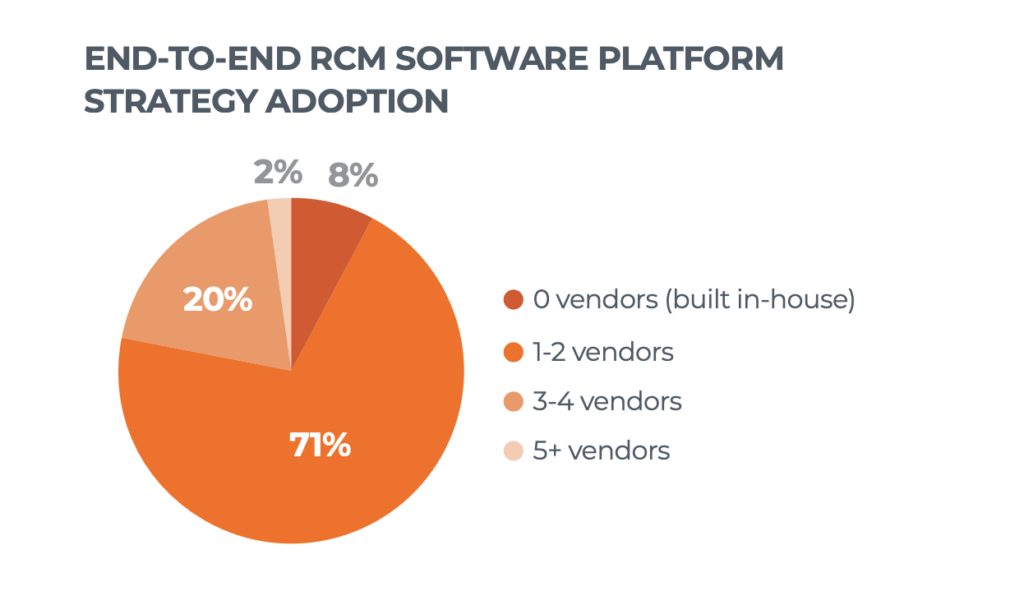
Implementing AI in healthcare RCM
3. How to maintain + strengthen data security
As AI adoption accelerates, so do concerns about security and compliance. Even before the 2024 cybersecurity breach, leading organizations were taking action, partnering with the U.S. Department of Commerce to establish industrywide safeguards.
Today, organizations can maintain cybersecurity while deploying AI by:
- Evaluating vendors rigorously
- Sharing only essential data
- Employing a “human-in-the-loop” approach
The latter is critical to maintaining high standards for patient care and financial accuracy, especially in terms of identifying AI hallucinations: incorrect or misleading results that models generate due to errors or biases in training data.
Implementing AI in healthcare RCM
4. How to prepare for the future of AI in RCM
The healthcare revenue cycle industry is moving toward a future where AI is not just helpful but transformative. And leaders are already banking on that: 100% of healthcare leaders recognize the benefits of AI in revenue cycle management.

If your team is currently implementing AI in healthcare RCM, take a look at what’s working today so you can plan for tomorrow.
